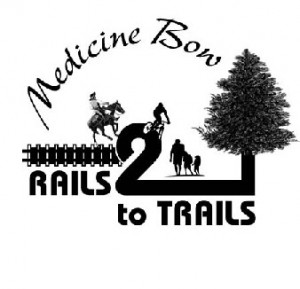This case will be of interest to people who understand property law, but will probably be confusing to most others. The ruling specifically affects a trail in Wyoming that was built by the US Forest Service:
 |
| Med Bow Rail Trail |
This finding could have implications on land ownership of many places including streets and roads that were converted from railroad rights of way, but there are also lots of limitations to the application of this finding. One news source (Grist) reports that the final resolution of the dispute still has to go back to the 10th Circuit Court for further ruling on the property claim. Don’t worry: Your rail trail is (probably) safe by Ben Adler
In the meantime, it is unlikely to affect either the Centennial Trail or any of the Snohomish County trail properties. There was a suggestion that it might affect the John Wayne trail in places.
A quote from Scotusblog.com: "The decision would not apply to the rights-of-way property that railroads abandoned after October 1988, because a law passed by Congress that year made clear that those lands would return to federal ownership once the railroads gave them up."
Rails-to-Trails Conservancy is covering the issue here:
http://community.railstotrails.org/blogs/trailblog/archive/2014/03/11/Supreme-Court-Hands-Down-Disappointing-Decision-for-Trails-in-U.S_2E00_.aspx
and here: http://www.railstotrails.org/news/features/supremecourt-info.html
A good place to start researching the details is at Scotusblog.com:
Recording of proceedings
Argument Recap on Scotusblog.com
http://www.scotusblog.com/case-files/cases/marvin-m-brandt-irrevocable-trust-v-united-states/
Opinion analysis: Victory — and money — for landowners
Most news articles seem to be based on information from Rails-to-Trails Conservancy, such as this article in Bicycle Retailer: Supreme Court ruling on rail trails is limited, expert says
The following article in Grist has a bit more information about the fact that the land action in the Brandt case is not quite resolved, it will go back to a lower court for further review of the details:
Don’t worry: Your rail trail is (probably) safe by Ben Adler
At the March 13th Board Meeting of the Centennial Trail Coalition of Snohomish County, we had several representative from Snohomish County Parks. There were several questions from board members about the Supreme Court decision as it relates to Snohomish County Parks long distance trails that use rail corridors, past and present. This is a summary of the message we heard at the board meeting:
- The specifics of this case in regards to local trails is complicated, but the following notes are relevant:
- This is not likely to affect county trail projects.
- The case is still going to get further review as it goes back to the 10th Circuit court for final decision.
- The case is probably narrow as it applies to a very limited number of conditions that applied: land that had easements based on the 1875 Railroad Act, land that had prior ownership or that was traded ownership by the government, and land for which other settlements or purchases had not been done.
- In Washington State most of the railroad rights of way and land purchases have been done under state law and action.
- Many railroad properties that are likely to be unused but for which the railroad company did not want to lose future re-use potential have been “railbanked” where the right of way for rail use is preserved while a secondary use is accepted, such as a trail or street or utility use.
- The complete history of deeds and ownership has to be reviewed before one can ascertain specific ownership or easement facts, essentially on a case by case basis. In most cases the various counties and cities have done this review process for the lands before they have been developed.
No comments:
Post a Comment